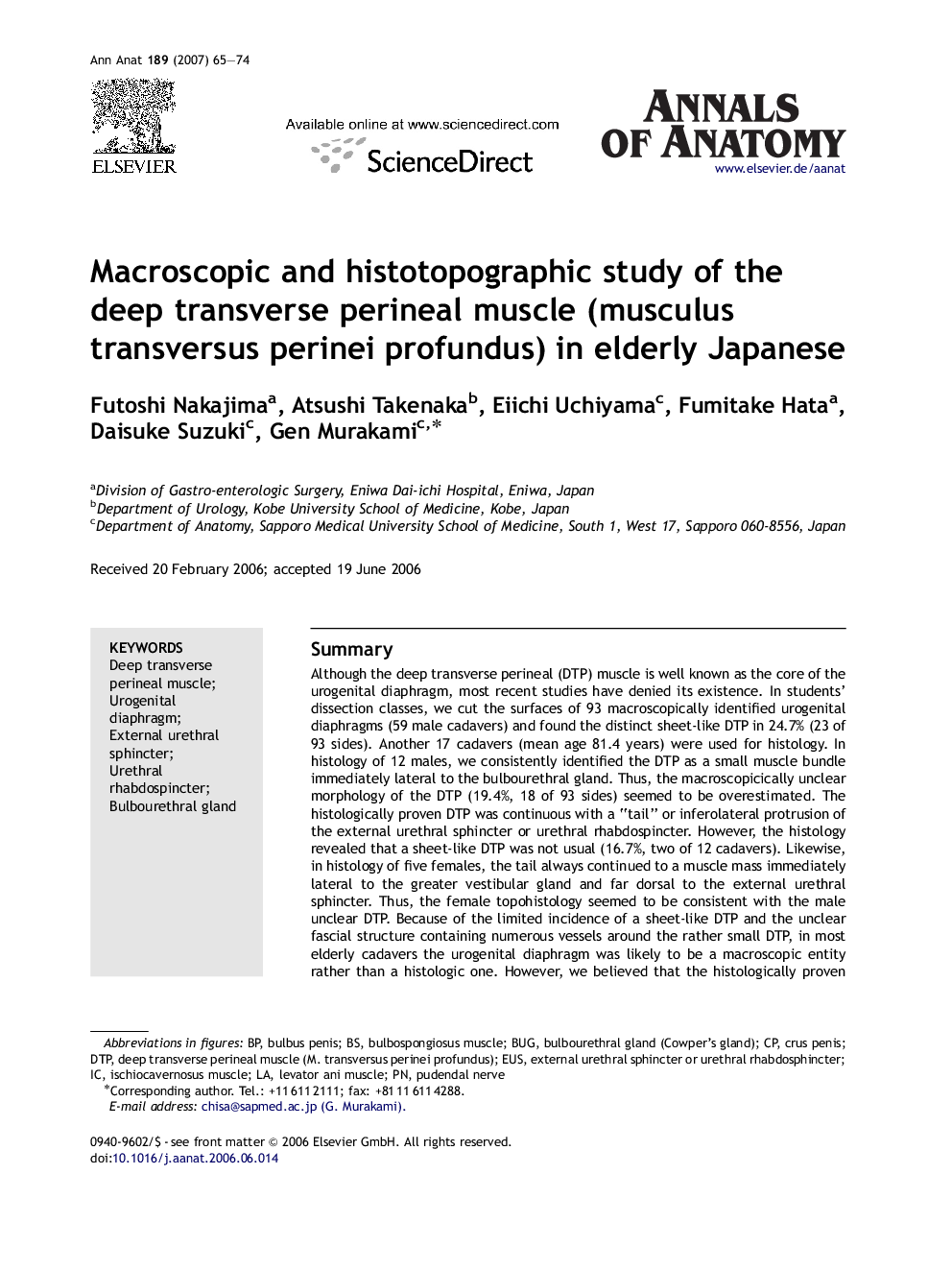| Article ID | Journal | Published Year | Pages | File Type |
|---|---|---|---|---|
| 8463020 | Annals of Anatomy - Anatomischer Anzeiger | 2007 | 10 Pages |
Abstract
Although the deep transverse perineal (DTP) muscle is well known as the core of the urogenital diaphragm, most recent studies have denied its existence. In students' dissection classes, we cut the surfaces of 93 macroscopically identified urogenital diaphragms (59 male cadavers) and found the distinct sheet-like DTP in 24.7% (23 of 93 sides). Another 17 cadavers (mean age 81.4 years) were used for histology. In histology of 12 males, we consistently identified the DTP as a small muscle bundle immediately lateral to the bulbourethral gland. Thus, the macroscopicically unclear morphology of the DTP (19.4%, 18 of 93 sides) seemed to be overestimated. The histologically proven DTP was continuous with a “tail” or inferolateral protrusion of the external urethral sphincter or urethral rhabdospincter. However, the histology revealed that a sheet-like DTP was not usual (16.7%, two of 12 cadavers). Likewise, in histology of five females, the tail always continued to a muscle mass immediately lateral to the greater vestibular gland and far dorsal to the external urethral sphincter. Thus, the female topohistology seemed to be consistent with the male unclear DTP. Because of the limited incidence of a sheet-like DTP and the unclear fascial structure containing numerous vessels around the rather small DTP, in most elderly cadavers the urogenital diaphragm was likely to be a macroscopic entity rather than a histologic one. However, we believed that the histologically proven DTP was present in elderly men and women even if it had changed as a result of degeneration with aging.
Keywords
Related Topics
Life Sciences
Biochemistry, Genetics and Molecular Biology
Cell Biology
Authors
Futoshi Nakajima, Atsushi Takenaka, Eiichi Uchiyama, Fumitake Hata, Daisuke Suzuki, Gen Murakami,
